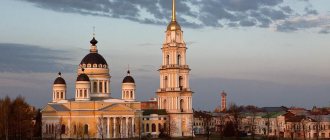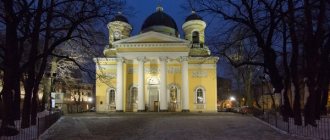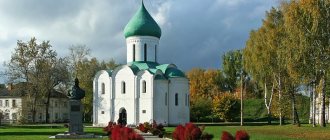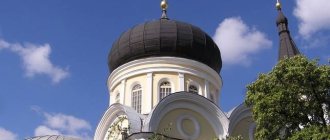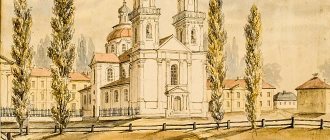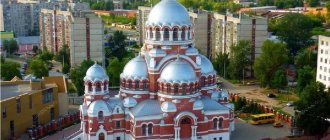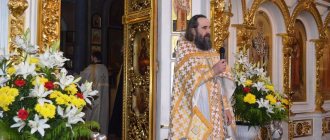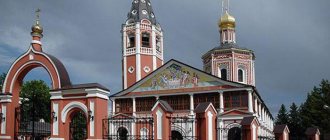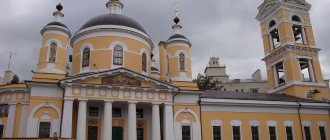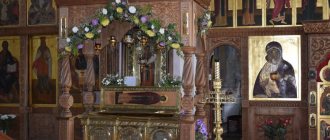Ancient temples, as a rule, are unlucky. The exact time and circumstances of their foundation are often unknown, the names of the architects have been erased from memory, even the appearance of the building often changes beyond recognition over the centuries. Nevertheless, there is a traditional scheme for the emergence of ancient churches, and the history of the Transfiguration Cathedral in Chernigov fits well into it.
Transfiguration Cathedral (Chernigov, Ukraine).
Spaso-Preobrazhensky Cathedral in Chernigov. Description, history
Chernigov is a unique city, which has experienced so many secrets, events and changes that few cities can boast of such things.
This is one of the largest historical architectural complexes in Ukraine. A record number of historical attractions are concentrated here:
- five temples of the 11th century,
- many monuments of the Cossack Baroque style,
- samples of the first stone churches in Rus'.
One of these churches is the Transfiguration Cathedral.
Origin of the name and its meaning
The Feast of the Transfiguration of the Lord is one of the most important holidays for the Orthodox Church. It belongs to the twelve holidays, which are next in importance after Easter, and is celebrated on August 19.
The holiday itself was established in memory of the Transfiguration of the Lord on Mount Tabor, when He appeared to His chosen disciples in His heavenly glory, now combining both human and spiritual principles. It is celebrated by both the Eastern and Western churches, but for Russian people its celebration has a particularly important status.
The second name of the holiday is Apple Savior, and it is only in Russian, since only in Rus' apples are blessed on this day, and not grapes, as was customary in Constantinople. The Russian Church intertwined the Transfiguration with separate traditions. On this day, strict fasting was relaxed, fish and butter were allowed, and even before this day, any fruits and vegetables were prohibited, only cucumbers were allowed.
To celebrate the Transfiguration, apples were imported everywhere and sold like hot cakes. Everyone who had their own apples or could buy them considered it great happiness to be able to distribute the apples consecrated in the church to their servants, poor or sick people.
The special status of the holiday, its inclusion among the greatest and good traditions of food, along with the permission now to eat everything that grows in the garden, led to the construction of cathedrals and large churches in honor of this church celebration.
Meaning
For almost nine centuries it was the cathedral for the local diocese. It was considered the center of state and public life. Many princes and spiritual rulers are buried under its arches. Here lie the relics of Prince Mstislav the Brave, as well as Svyatoslav Yaroslavovich and his sons Gleb and Oleg. In 1246, the holy martyrs Michael and Feodor were buried here. However, in 1572, by order of Tsar Ivan the Terrible, the relics were transported to Moscow.
Some researchers believe that it was here that Prince Igor, the hero of “The Tale of Igor’s Campaign,” was buried. He ruled Chernigov from 1198 to 1201. Hierarchs of the local diocese Lazar Baranovich and Ambrose Dubkevich are also buried here. In the era of ancient Rus', the cathedral housed one of, perhaps, the most revered icons in Rus' - the Smolensk Icon of the Mother of God, or Hodegetria. True, after a while Vladimir Monomakh transported the shrine to Smolensk.
History of the Transfiguration Cathedral
The Transfiguration Cathedral in Chernigov was conceived and built by Mstislav Vladimirovich, Prince of Chernigov. Mstislav was one of the sons of Grand Duke Vladimir, the baptist of Rus'.
After successful military operations in 1024, the prince expanded his own territories, strengthened the principality and built a princely residence in “Dneshny Grad”, a complex of buildings, the center of which should be the new cathedral.
The exact date of the start of construction is unknown and varies between 1030 – 1034.
In 1036, the prince died while hunting, and the craftsmen were removed from the unfinished temple and transferred to the construction of the Novgorod cathedral.
For about 10 years, the Chernigov cathedral consisted of only a few walls, the height of “the height of a rider on a horse,” until construction was resumed under Svyatoslav Yaroslavich, the next Chernigov prince.
The cathedral was completed around 1050. At the time of construction, it was the central cathedral not only for Chernigov, but also for the entire Chernigov-Seversk principality. For almost 900 years, the temple continuously had the status of a cathedral. At the same time, it had important political significance, since both the spiritual and political life of the principality centered around it.
A tomb for the princes was built on the territory of the cathedral, and the bishops who cared for Chernigov were buried here. It was in the cathedral, according to the chroniclers, that agreements were concluded, sealed with an oath on the Bible and kissing the bishop's cross. From the pulpit of the cathedral, various royal decrees were announced to the people.
The invasion of the Mongols led by Batu Khan in 1239 led to the cathedral being plundered and partially destroyed. Its vaults and domes were broken. This forced the transfer of the episcopal see. The complete restoration of the temple began only in the 17th century; in 1675, reconstruction and rebuilding work began, in which the temple began to differ somewhat from its original appearance.
The next radical reconstruction was carried out in 1791-1798. Before this, the cathedral suffered a serious fire. According to historical data, Count Potemkin personally allocated funds for the reconstruction of the cathedral and petitioned for its speedy restoration. But the count's good motives harmed the temple and completely changed it.
Many researchers agree that this restoration of the cathedral caused more damage than the fire and all the Mongol destruction combined. At that time, the temple was completely destroyed from the inside, all wooden parts were destroyed, not a single original fresco was preserved.
During the reconstruction, the entire appearance was completely rebuilt: instead of the small baptismal church that had burned down, another symmetrical tower was added. Spiers were placed on them, and the sharp tops of the towers were built on the principle of churches.
Spaso-Preobrazhensky Cathedral in Chernigov photo 1898
Later, they built a staircase tower and carried out other cosmetic work: they replaced the domes, gilded them, and whitewashed the facades. By 1818, the cathedral became what it is now.
The Soviet government closed the cathedral in 1926, transferring it as a warehouse to Glavrosmaslozhirsbyt. There was no talk of any divine services, and in 1936 the temple was transferred to the historical museum. During wartime, in 1942, the temple was again opened for the celebration of the Liturgy. Services continued until 1961, when the cathedral was again made part of the museum.
Spaso-Preobrazhensky Cathedral in Chernigov photo 1905
In the 1980s, the temple was forcibly seized by representatives of the Ukrainian Orthodox Church of the Moscow Patriarchate. All museum utensils were thrown out of it, and the priest was returned. Worship services have resumed on a regular basis. Such behavior has sparked conflict, and questions are often raised about the legality of such actions.
THROUGH CENTURIES
For more than nine centuries, the Transfiguration Cathedral was the spiritual center of the Chernigov land. In addition to its ecclesiastical role, it had great political and social significance. Under the arches of the temple, solemn bishops' services were performed, the shrines of the Russian Church were brought here, here the princes swore allegiance to each other and resolved the most important issues of state life.
The first evidence of the Transfiguration Cathedral dated by historical sources dates back to 1034 (or 1036). In The Tale of Bygone Years we read: -
“Mstislav went fishing and got sick and died. And having placed the Holy Savior in the church, he created it himself, for it was given out in front of him on high, like a dozen standing on a horse.”
This testimony is translated as follows: “Mstislav went hunting, fell ill and died. And they laid him in the Church of the Holy Savior, which he himself created: after all, with him, its walls were built as high as you can reach with your hand while standing on a horse.”
This quick note from the ancient Russian chronicle is doubly remarkable. It not only confirms that it was Mstislav Vladimirovich the Brave who ordered the construction of the Chernigov Cathedral, but also notes a curious intermediate stage of work. Probably by 1034 (or 1036), judging by the indication that a rider standing in stirrups could reach the top row of masonry at that time, the height of the cathedral walls was about four meters. If the construction of the temple was carried out without interruptions and long stops, this state of the building, given its size, most likely could have been achieved in at least a couple of construction seasons (climate conditions determined that construction work could only be carried out during the warm season).
However, some researchers believe that the phrase “be bo” refers the message about the unfinished temple to the previous phrase - to the moment of its foundation, and not to the moment of Mstislav’s burial in the completed temple. Taking into account a number of indirect signs, these scientists propose a new dating: by 1034 (1036) the cathedral had already been built, its lower part, those same four meters, appeared even before Mstislav, and Mstislav began construction in 1024-1026.
METROPOLIA CENTER
After the death of Mstislav the Brave, all his lands were united under the rule of Yaroslav the Wise. The Grand Duke of Kiev Yaroslav, who again reigned supreme in Rus', placed his son Svyatoslav on the Chernigov table. It is believed that Svyatoslav encouraged construction activities in his principality. Among the stone buildings erected during his reign on the lands of the Chernigov region was the finally completed Transfiguration Cathedral, which became the cathedral church of the Chernigov diocese. Established at the end of the 10th century, the diocese was the third in its hierarchical status in all of Rus'. For some time in the second half of the 11th century, the ruling bishop of Chernigov even received the metropolitan title. The prominent modern historian of the Church B. N. Florya writes: -
“At present, it can be considered established that... in Pereyaslavl (Pereyaslavl South, now Pereyaslav-Khmelnitsky, the regional center of the Kiev region. - Author) there was a special titular metropolis, separate from Kiev, established in the 60s of the 11th century, which was a consequence of the peculiar political structure of Rus' under the Yaroslavichs - Izyaslav, Svyatoslav and Vsevolod, which received the conventional name “triumvirate” in science. At the same time, a titular metropolitanate was created in Chernigov, data about which was preserved in Greek sources and in Nestor’s life of St. Theodosius of Pechersk. Probably, with the establishment of autocracy of Vsevolod Yaroslavich after 1078 and with the death of the Chernigov Metropolitan Neophyte, first the Chernigov Metropolis was abolished, and then, with the death of the Pereyaslav Metropolitan Ephraim, the Pereyaslav Metropolis.”
The establishment of the autocracy of Prince Vsevolod in Kievan Rus was a consequence of the death of his siblings. Svyatoslav Yaroslavich of Chernigov, following his uncle Mstislav the Brave, rested in the Transfiguration Cathedral.
TROUBLES AND VICTORIES
An interesting piece of evidence related to the kissing of the cross in the Chernigov Cathedral was preserved in the Ipatiev Chronicle in 1146. According to this document, princes Vladimir and Izyaslav Davidovich, who then owned Chernigov, entered into a kiss of the cross with princes Igor and Svyatoslav Olgovich. The chronicler notes that Bishop Onuphry admonished the Chernigov clergy: “If anyone breaks this kiss on the cross, he will be cursed by the twelve lord’s holidays.”
Soon Igor Svyatoslavich occupied the Kiev grand-ducal table, but the people of Kiev did not want to accept him. After an unsuccessful battle, Igor was captured and forcibly tonsured a monk. In 1147, the angry people of Kiev dealt with the monastic prince. Three years later, Svyatoslav Olgovich transferred his relics to the Chernigov Cathedral. Subsequently, the murdered Igor was canonized.
Since 1246, the relics of the martyrs, Prince Mikhail Vsevolodovich and his boyar Theodore, were buried in the Transfiguration Cathedral of Chernigov. Under Ivan the Terrible, after the general church canonization of saints and the spread of their veneration, the holy remains were transported to Moscow.
In general, Batu’s invasion had sad consequences for the local bishop’s see. Just as the defeat of Kyiv ultimately led to the departure of the metropolitans of “All Rus'” from Sophia of Kyiv in search of a new residence, so the Chernigov bishops were forced to look for a new refuge. At one time they settled in Bryansk, then the department was completely abolished, and the parishes of the Chernigov region came under the care of the Smolensk rulers. In fact, the department was resumed in the 1640s, but the bishops continued to live either in Kyiv or Novgorod-Seversk. The residence of the bishops of Chernigov in the city according to the name of their title was finally approved in 1672.
CHERNIGOV FEKLA
Centuries passed, the cathedral gradually deteriorated. The return of the diocesan center to Chernigov required urgent restoration of the church in honor of the Transfiguration of the Savior.
In 1675, through the efforts of Archbishop Lazar (Baranovich) of Chernigov, restoration work was carried out here. A thorough reconstruction of the temple was undertaken at the end of the 18th and beginning of the 19th centuries, after it was damaged by a great fire in the 1750s.
The fire destroyed the interior and decoration of the cathedral, and severely damaged the most valuable pre-Mongol frescoes. During the restoration, the appearance of the temple changed quite a lot: in the southwestern corner, on the site of the ancient baptismal chapel, a round tower was built, symmetrical to the left original tower with a staircase to the choir. In keeping with the fashion of the times, high spiers were erected on both towers, and vestibules were built in front of the portals. In the 19th century, the cathedral was painted, as a result of which the remains of the first frescoes were either written down or knocked down.
Towards the end of the 19th century, in the wake of growing scientific interest in the study of the past, research began on the architectural monument. Already in Soviet times, in the early 1920s, under a thick layer of plaster, restorers discovered an 11th-century fresco with a half-length depiction of Saint Thekla. The original fresco, alas, perished during the Great Patriotic War, but its exact copy, created in 1934, has survived.
Divine services in the Chernigov Cathedral ceased in 1926 for sixteen years. During the occupation, the Germans resumed liturgical life here, and it did not die down until the time of Khrushchev’s struggle against religious “remnants.” From 1961 until the late 1980s, the cathedral was run by a local museum.
Current status of the Transfiguration Cathedral
The Transfiguration Cathedral in Chernigov is part of an architectural and historical reserve, which includes 29 preserved buildings from ancient times.
This reserve is one of the most historically important, as it contains 6 buildings considered to be the earliest surviving buildings in Eastern Europe. The Chernigov Ancient Nature Reserve offers excursions, carries out the necessary restoration work and studies monuments.
The temple is an active temple-museum and is also included in the UNESCO World Heritage List.
The influence of time
Over its almost thousand-year history, this ancient cultural monument has undergone numerous destructions and reconstructions. During the years when Chernigov was taken by the army of Khan Mengu in 1239, the cathedral was completely plundered. According to legend, it was here that the last defenders of the fallen city closed in defense. The defense of Chernigov was led by Prince Mstislav. His wife, in order not to fall into the hands of the enemy, jumped out of the windows of the red tower of the cathedral.
The episcopal see was moved from Chernigov to the city of Bryansk. And only in 1675, under Archbishop Lazar Baranovich, restoration work began. Then the apses were built on.
Architecture of the Transfiguration Cathedral
The architecture of the cathedral is a skillful mixture of Byzantine traditions and Romanesque basilicas. From the basilicas there is a design, orientation to the cardinal directions, symbolism of the appearance of Noah's Ark. From the Byzantine style - the existence of a dome and special triangular sails, which gave the temple design visual lightness.
The Transfiguration Cathedral is a five-domed temple on six pillars and three apses. Its length is about 35 m, width - 22 m, height 30 m, and the thickness of the massive walls is 1.4 m. The temple itself skillfully combines even angles, verticals and horizontals, and its elongation is further emphasized by the division of columns.
Such construction is not typical for Russian architecture, but there are suggestions that the temple itself partly repeats the Tithe Church in Kyiv. The similarity of this temple and St. Sophia of Kyiv, as well as the fact that the construction of these two cathedrals is separated by some couple of decades, confirms the theory that the craftsmen were from the same Byzantine artel.
The Transfiguration Cathedral in Chernigov was one of the most richly decorated cathedrals of that time. Historical evidence speaks of marble floors, columns and smalt floors with patterns.
Unfortunately, all this magnificent decoration was not preserved due to the fire and reconstruction work. The only surviving fresco from the 11th century was lost during the Patriotic War, when the museum that housed it burned down.
THE BIRTH OF A MASTERPIECE
It is believed that Mstislav Vladimirovich the Brave, Prince of Chernigov, began the construction of the main temple of his capital around 1030 or, if we take slightly wider chronological boundaries, in the first half of the 1030s. By that time, he managed to reconcile with his brother, the Grand Duke of Kyiv Yaroslav the Wise, and firmly settled in the Chernigov region. The left bank of the Dnieper, according to the agreement between the brother princes, was in the full possession of Mstislav. Ancient Chernigov was supposed to become a worthy center of Mstislav's fatherland, a counterweight to Kyiv, a new political and cultural center of Rus'. In the Christian era, any large city, especially one that was destined for the capital, could not do without a magnificent cathedral.
The grandeur of the construction was determined by the level of the customer’s aspirations. The dimensions, shapes, external design of the temple and its interiors directly depended on how loudly the organizer wanted to announce himself to the outside world and how deeply his relationship with God was built.
MYSTERIOUS ARCHITECTS
It is obvious that the architects of the Chernigov Cathedral were foreign masters. Experts in the field of architecture call the spatial planning solution of the Transfiguration Church unique. Such designs are practically unknown in ancient Russian architecture. By the 11th century, the temple-building engineering thought of Christian Europe had developed two main types of temple: the more ancient basilica, which became especially widespread in Western and Central Europe, within the influence of the Roman Catholic Church, and the cross-domed one, characteristic of Byzantium and countries that experienced Byzantine influence. The Transfiguration Cathedral miraculously combined both traditions; this building simultaneously has the features of a basilica and a Byzantine cross-domed church. It is difficult to say who headed the team of architects: whether they were architects from some Catholic state, familiar with the intricacies of Byzantine construction technologies, or, conversely, Greek craftsmen who had mastered the skills of constructing basilica-type churches. It is sometimes claimed that Mstislav the Brave, who before Chernigov for a long time had a princely table on the outskirts of Russian influence, in the city of Tmutarakan, on the Taman Peninsula, invited craftsmen from there. The builders of the cathedral clearly knew about the principles of religious construction in Asia Minor and Transcaucasia, where similar temples are believed to have been built at that time. However, it is still more likely to see the Constantinople origin of the authors of the council. Researcher P. A. Rappoport suggested that the craftsmen who created the Transfiguration Church in Chernigov and St. Sophia of Kyiv represented the same artel, which was invited from the capital of Byzantium.
MONARCHICAL ASPECT
The question arises: why was the main cathedral in the domain of Mstislav the Brave consecrated in honor of the Transfiguration of the Lord?
Transfiguration is one of the most significant holidays of the Orthodox Church, celebrated on August 6 (19). It is one of the twelve holidays. The roots of special veneration of the Transfiguration of the Lord in Rus' go back to the era of Equal-to-the-Apostles Vladimir Svyatoslavich, Grand Duke of Kyiv, baptist of the East Slavic lands. The oldest indication of this is preserved in sources under the year 996. Chronicles report a battle between the army of Vladimir Svyatoslavich and the Pechenegs in the Kyiv suburb of Vasilevo. The prince's forces were small, he chose to retreat, but made a vow to rebuild the temple if the Pechenegs left: -
“Then Volodimer promised to build a church of the Holy Transfiguration in Vasilevo, for on that day there would be the Transfiguration of the Lord.”
The danger passed, and the Grand Duke of Kiev kept his word. Thus, the Vasilevsky Transfiguration Church became one of the first Orthodox churches built in Kievan Rus after the beginning of its Christianization, and the contemporaries of those events, newly converted Christians, found visible evidence of the patronage of the Lord. In the Middle Ages, people lived in a special atmosphere of miracles, which were perceived as everyday reality. Miracles and what is associated with them largely determined human activity. Therefore, the miraculous outcome of the confrontation on the day of the Transfiguration gave every reason to treat the holiday itself with special attention and reverence and, moreover, to associate the success of military enterprises with the Transfiguration.
The next significant stages in the development of the Transfiguration cult in Rus' date back to the 12th and 15th centuries. If we turn to history, we can come to the conclusion that the construction of Spassky churches and monasteries predominated during the years of the most serious changes in the political life of Rus': the collapse of the Kievan state and the establishment of new princely lines (XII century), and then the formation of a unified Russian state (XV century) .
Here are examples from the 12th century. Vladimir Monomakh, who founded or restored the city of Vladimir (on the Klyazma) in 1108, built the Transfiguration Church in it, which was the first stone structure in those places: -
“That same summer, Volodymyr Monomakh built the city of Vladimir Zaleshsky, and created in it the church of the stone of the Holy Savior.”
Somewhat later, in 1164, Andrei Bogolyubsky, the first prince of Vladimir, built the white stone Church of the Transfiguration of the Savior in the Monomakh courtyard in Vladimir. It is also known about the later existence of the Spassky Monastery in Vladimir on the site of the princely palace.
In the 15th century, the Preobrazhensky cult played a special role for the Moscow house of the Danilovichs. And this veneration began even earlier. The attention of the first Danilovichs to the Transfiguration is evidenced by the fact that the Moscow temple erected by Ivan Kalita (Prince of Moscow in 1325-1340), around which the court monastery of the grand-ducal family was formed, was dedicated to the Transfiguration of the Lord (Church of the Transfiguration on Bor in the Kremlin). According to chronicles, Ivan Danilovich Kalita had a special love for the Spaso-Preobrazhensky Monastery: he -
“I loved him more than other monasteries, and he often came to prayer for the sake of prayer and gave much alms to those who exist...”
The peak of the cult of the Transfiguration coincided with the era of Ivan III (he headed the Moscow state in 1462-1505) and was associated with the military activities of the Grand Duke, a tireless collector of Russian lands. On the day of the Transfiguration of the Lord, military campaigns began repeatedly, and prayers were performed in the Transfiguration churches for the success of military enterprises.
Thus, during the Russian Middle Ages a fairly strong Preobrazhensky cult can be traced.
The Transfiguration, which revealed to the world Jesus Christ the God, the King of kings, according to church understanding, had a clear monarchical aspect in the minds of the people of the Middle Ages. The increased attention to this holiday also reflected the sovereign aspirations of the princes; it symbolized the sacred side of their power.
In addition to the monarchical aspect, the Transfiguration of the Lord clearly had a military aspect. Let us remember that Mstislav was a major warrior of his time, and it was no coincidence that he received the nickname Brave. In 1031, together with Yaroslav the Wise, he made a successful military campaign against Poland, from where he returned with rich trophies and a large number of prisoners. It is quite possible that the foundation of the Transfiguration Cathedral in Chernigov reflected not only the monarchical, but also the military Christian views of Mstislav, and the reason for the dedication of the main temple of Chernigov was the Polish campaign of 1031. By paying tribute to the Transfiguration, Mstislav could build a bridge between himself and his father, Grand Duke Vladimir Svyatoslavich, thereby emphasizing the continuity of power.
Iconostasis of the Transfiguration Cathedral
Surprisingly, the iconostasis, built after the great fire, has been preserved in full value in the cathedral. It is known that the iconostasis was created in the city of Nizhyn by local masters Savva Voloshchenko and Stepan Belopolsky. The iconostasis project was created by Ivan Yasnygin, a provincial architect. A priest from Borzna, Timofey Mizko, was appointed for the painting.
The iconostasis itself is a linden frame 12 m high and 20 m wide, fully decorated with paintings and carvings. Work on it was delayed and lasted more than 2 years. The iconostasis occupies the entire height and width of the temple; it is divided into three sections - for each of the chapels of the temple.
It has two tiers of icons, the background of the iconostasis is silver, and the protruding columns, cornices, etc. are trimmed with gold. For the central chapel in the iconostasis, the Royal Doors are especially highlighted and decorated: oval opening doors with a gap between them and the rest of the iconostasis.
The height of the gate is approximately 7 arshins, which is about 5 m. In the gap above the gate there is a figurative image of the Holy Spirit in the form of a dove. A total of 63 icons were painted for the iconostasis.
The complexity, duration and attention to detail in such work led to the fact that the amount allocated for the iconostasis was completely insufficient.
According to information from that time, there was only enough money left to pay for the work of the craftsmen, no more.
Then the local bishop sold the foreign coins that were stored here as donations to the already closed and abolished monasteries.
This amount was enough to pay the remaining expenses, and work on the iconostasis was completed.
For modern historians and cultural experts, the iconostasis is of interest and has undoubted cultural importance. It is regularly studied by researchers of antiquity, both in Ukraine and abroad.
The iconostasis has reached our time without a single alteration and is the same as it was originally, with the exception of the restoration of the icons.
Reconstructions
The next major reconstruction of the temple was carried out in 1791-1798, after a fire, when the building was badly damaged. It was at this time that many ancient Russian frescoes were lost.
Chroniclers write that in 1783 Potemkin was passing through Chernigov and became very interested in this cathedral. And as a result of his petition, sufficient funds were allocated for repairs. However, unfortunately, the restructuring did more damage to the temple. It caused damage that even all the previous destruction could not do.
Then two pointed towers were built on the sides of the cathedral. This began to give the cathedral a certain resemblance to a church. In addition, they served as a sundial.
Shrines of the Transfiguration Cathedral
During the entire existence of the temple, various Orthodox shrines were kept here. Here, from 1246 to 1572, were the relics of the Chernigov martyrs, Prince Mikhail and Boyar Fyodor, who were killed by the horde. The prince went to the khan to receive the princely label, but refused to undergo the pagan rite of fiery purification and worship idols.
They were immediately killed, their bodies were thrown to be eaten by wild animals, but miraculously the animals did not touch them. Christians secretly took the bodies and transported them to Chernigov. For worship they were placed in the Transfiguration Cathedral. The relics of other princes and saints also rested here: Bl. Prince Igor, Metropolitan Konstantin.
Until 1921, the cathedral housed the relics of the local saint, St. Feodosius Uglitsky. He was the Archbishop of Chernigov and a large number of miracles are associated with his life. To preserve the relics, they were transported to Leningrad, and the image of the saint supported people during the siege. There is evidence of miracles performed, of the saint’s intercession, of his help.
For a long time, the cathedral housed the miraculous icon of the Repkinskaya Mother of God, otherwise called the Lyubechskaya icon. She was found in the 11th century, and is known for many miracles performed by her; people pray to her for various spiritual and physical ailments.
It was also here that the icon was located, now revered as Smolensk. She was brought here by the Greek princess Anna, the mother of Vladimir Monomakh. Vladimir took the icon given to him by his mother with him to Smolensk when he was installed as a principality there. This icon is one of the most revered and best known in the Orthodox world.
SACRED TEMPLE
After the resumption of services in the Transfiguration Cathedral, its ancient walls again, like centuries ago, became the custodians of a significant number of shrines. Here a pilgrim can venerate particles of the relics of God’s saints, kneel before praying images, and think about the eternal near the ancient frescoes. Under cover in the temple lie the remains of two famous saints of pre-Mongol Rus': Prince Igor Olgovich and Metropolitan Constantine I. Our story is about Saint Constantine.
Metropolitan of “All Rus'” Constantine I (1155-1159) became the head of the Russian Church in a very difficult period for it. It was a troubled time for the metropolitan see, when, following political unrest, discord penetrated into the Church. In 1147, Prince Izyaslav Mstislavich of Pereyaslav, who had taken the throne of Kiev a year earlier, took advantage of the “widowhood” of the metropolitan see after the departure of its head Michael to Constantinople (the metropolitan had left the borders of Rus' and, it seems, did not want to return), convened a bishops’ council of the Russian Church. At the council, without any coordination with Constantinople, they decided to elevate the “scribe and philosopher”, a schema-monk from the city of Zaruba, Clement, nicknamed Smolyatich, to the rank of Metropolitan of Kiev and “All Rus'”. The Patriarch of Constantinople, confronted with a fact, did not recognize Clement as the legitimate first hierarch of the Russian Church. In turn, Clement unequivocally stated his position regarding Constantinople: he did not commemorate the High Hierarch of Constantinople during services. The Russian Church was divided: some of the hierarchs and flock agreed with the resolution of the bishops' council, while others did not.
OUT OF THE FRYING PAN INTO THE FIRE
The opponents of Izyaslav Mstislavich’s protege were representatives of not only church, but also secular circles. The most notable among them was the prince of the Rostov-Suzdal land Yuri Dolgoruky. In 1149, after winning the battle of Pereyaslavl South, he captured Kyiv and expelled Izyaslav Mstislavich and Metropolitan Clement from the “mother of Russian cities.” However, the political and church triumph of Yuri Dolgoruky did not last long. Here is how Metropolitan Macarius (Bulgakov) describes further events: “Izyaslav again entered Kiev and brought with him Clement, who continued to remain in the metropolitan see not only until the death of Izyaslav (November 13, 1154), but also under his successor Rostislav, until [again] Yuri Dolgoruky became the Grand Duke of Kyiv (March 20, 1155). Then it was immediately given to Constantinople that they were ready to receive a new metropolitan from the Patriarch in Kyiv... The Patriarch did not hesitate to elect and install Constantine as Metropolitan for Russia.”
With the arrival of Constantine, the church unrest did not subside, but, on the contrary, flared up with renewed vigor. By the end of the 1150s, the Russian Church had two primates, each of whom did not recognize the other, had its own supporters and claimed the title of Metropolitan of “All Rus'”. On the side of the Greek Constantine, in addition to the powerful but remote Byzantium, came Prince Rostislav Mstislavich of Smolensk, who had already managed to be the Grand Duke of Kiev, and claimed the throne of Kiev. Kliment Smolyatich was still supported by the Izyaslavichs, the children of Izyaslav Mstislavich. The position of some cities, or rather, their political elite and influential clergy, became quite clearly evident at this time. Thus, dissatisfaction with Metropolitan Constantine was typical for the flock of Southern Pereyaslavl. The Novgorodians, on the contrary, recognized the pastoral authority of the Greek primate: Arkady, who was elected to the Novgorod see, went to Constantine for ordination.
Age and the hardships of ruling a divided Church undermined the hierarch’s health. He passed away in 1159. Shortly before his death, Metropolitan Constantine handed over his will to Bishop Anthony of Chernigov and took an oath from him that his last will would be fulfilled. In this will, he asked not to bury his body, but to throw it out of the city to be devoured by dogs, for he considered himself to be the culprit of all the troubles of the metropolis and the misunderstanding with the two current metropolitans. Bound by an oath, Bishop Anthony fulfilled his promise. For three days the body of the saint was outside the city. These days there was a terrible storm in Kyiv. After three days, Konstantin’s body was found unharmed and buried with honor in the Transfiguration Cathedral in Chernigov. After the burial, the storm in Kyiv subsided.
Interesting facts and legends
- The Transfiguration Cathedral in Chernigov is famous not only for its antiquity, but also for many legends, traditions and various stories. For example, according to one legend, at the site of the cathedral there used to be a temporary church, and previously one of the important pagan temples was located on this land. It is possible that one of the parts of the foundation is the old foundation of the temple.
- A particle of the relics of St. Theodosius of Uglitsky is located in the Chernobyl temple: during one of the services, an ancient icon was placed on the relics, and at the same time a particle of the relics was separated from the body. The saint was connected with Chernobyl: according to one woman, on the night of the tragedy the saint appeared to her, praying for the people. Cases of healing from radiation sickness were recorded at the relics.
- A similar legend is also associated with the discovery of the relics of Metropolitan Constantine. The saint, being sure that he was the culprit and forced participant in the unrest within the Kyiv metropolis and the conflict between the metropolitans, took an oath from the prince to fulfill his will exactly. After his death, the document was opened: the saint asked not to be buried, but to be thrown outside the city walls, which was done. For three days his body was outside the city, and a thunderstorm and a great storm raged in Kyiv all the time. When, after this time, the prince sent people for the body of the saint, he was found incorrupt and buried in the cathedral with great honors. Then the storm stopped.
- The presence of a basement, a lower tier, in the temple at one time created many legends about the underground passages under the temple and the presence of various crypts there.
- Some researchers call the cathedral the Chernigov Stonehenge, since various symbols are encrypted in its masonry. Thus, the signs of the zodiac are hidden in the ornaments of the tower, and a sundial is hidden in the arrangement of the temple windows, displaying the times of the beginning of services.
TEMPLE OUTSIDE
The layout of the Transfiguration Cathedral is quite complex. In studies you can find different indications of the number of load-bearing pillars: the numbers are called eight, six or four. In particular, art historian A.I. Komech writes: “In the literature devoted to ancient Russian architecture of the 10th-15th centuries, it is common to define the structure of temples by the number of pillars: four-, six-, eight-pillars. Such a classification distorts the real compositional nature of the monuments, moreover, it incorrectly interprets the forms themselves. It is abstracted from the ideas associated with basilic buildings, and is violent for buildings of the cross-domed type. As a rule, all ancient Russian churches of the 11th-12th centuries. (except for the simplest ones) - four-pillared, they come with a narthex (the concept of it has almost disappeared from our architectural descriptions) or without it, with apses - either adjacent to the main nine-lobed structure, or having additional cells. The Transfiguration Women's Cathedral in Chernigov is a four-pillar church of the type of an inscribed cross, with a narthex and a developed altar part.”
The modern appearance of the cathedral is very different from the original. In the 11th century, the temple had only one tower - the northern one, and it was lower than the current one. The tower spiers were missing. The vestibules built at the portals in 1814 were also missing. The walls were not plastered. Their height before the leveling carried out in the 18th century was uneven. It is believed that this feature was a consequence of the different widths of the spindles: the zakomaras that end them begin at the same height, but since the spans are different, they rise unequally. You can see that the arches of the western spindles on the side walls of the naos run highest; in the eastern spindles, which are symmetrical to them, the arches go noticeably lower. Apparently, the principle of the arrangement of the roof was also different: in ancient times, the ceilings were everywhere under the roof, but now under the roof is observed only above the central sections of the walls. The facades of the building are made of extremely elegant brickwork with a hidden row. They are framed by pilasters, flat in the first tier and profiled in the second.
WALL MASONRY
Researchers of the Chernigov Cathedral Yu. Yu. Shevchenko and T. G. Bogomazova Fr. At the same time, a curious technique is encountered in the masonry: three plinths placed vertically on an edge are interspersed with stirrup plinths located horizontally - one above the other. Such masonry was not used in Byzantium.
WINDOW
In the tympanums of the central pillars of the cathedral walls there are triple windows, with the middle window slightly higher than the others. This architectural feature is quite common in Byzantine architecture. In the literature, this arrangement of windows is sometimes called “Byzantine”.
BRICK ORNAMENTS
“In the central apse, facades and north-western tower of the Spassky Cathedral,” we again quote Yu. Yu. Shevchenko and T. G. Bogomazova, “Christmas tree masonry (like the Roman masonry “in the ear”) was used.” They are characteristic of the architecture of the 8th-9th centuries of Crimea and Taman, the 9th-11th centuries of Volga Bulgaria, and are also known at this and later times in Central Asian architecture. The meander belt of the same cathedral tower is an even earlier element, consisting of Y-shaped double components (the second sign is vertically inverted).” This ornamental design is typical for buildings contemporaneous with the Spassky Cathedral in India and Central Asia.
Address how to get to the Cathedral
The most convenient way to get to Chernigov is from Kyiv: shuttle buses and trains run regularly from there. Both of them go with an interval of no more than half an hour. From the bus stations you can get to the cathedral by public transport, by buses 12, 30, 33, 39, 44. Buses run every 6-10 minutes, and the total time of arrival to the cathedral on any route is 30-40 minutes.
If necessary, you can order a taxi, the address of the cathedral is Chernigov, st. Preobrazhenskaya, 1. The temple is open to the public every day, from 10:00 to 19:00 excursions can be held there by agreement, and there is also a church shop.
Schedule of services
The temple is active: regular services are held there.
| daily except Monday | Liturgy 8:00 |
| Sunday | Liturgy 7:00, 10:00 |
| daily except Sunday | Vespers 16:00 |
| holidays during the week | Liturgy 7:00, 10:00, Vespers the day before 16:00 |
If necessary, individual services and sacraments can be ordered at the church.
It’s not for nothing that Chernigov has the title of one of the most harmonious, ancient and beautiful cities. The amazing preservation of unique cultural monuments makes it a must-see tourist destination and attracts regular pilgrimage groups. The Transfiguration Cathedral is perhaps the most important monument of ancient architecture, along with the Kyiv Sofia.
Author: Katya Volkova
Article design: Mila Friedan
